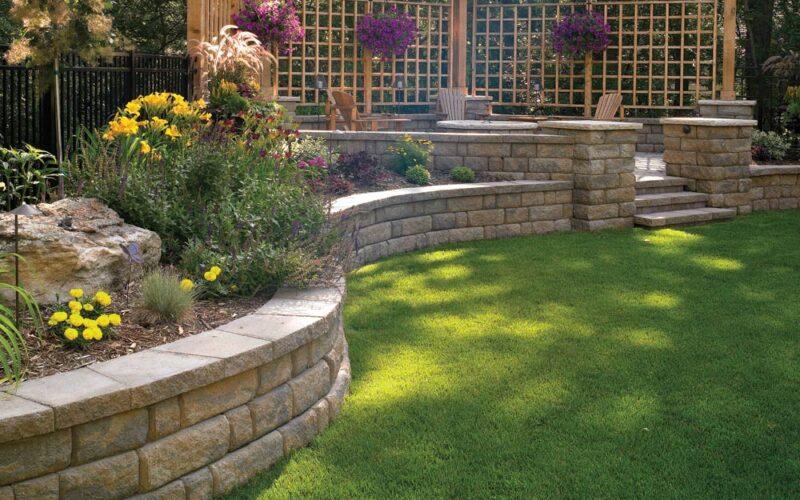
A retaining wall is a structure that holds back soil, water, or other material. It is usually built with concrete, stone, or wood. If you have a home with a sloped yard, you may want to consider building a retaining wall to create more usable space in your yard. In this guide, we will show you how to build a retaining wall around your home.
Why Build A Retaining Wall?
There are many reasons why you might want to build a retaining wall around your home. Maybe you want to create additional outdoor living space. Or maybe you live in an area that is prone to flooding and you want to take steps to protect your home. Whatever your reason, a retaining wall can be a great addition to your property.
Functional Benefits of Retaining Walls
Retaining walls can be used to prevent soil erosion. They can also be used to create level spaces in sloped yards. This can be helpful if you want to create an outdoor living space or garden area. In addition, retaining walls can be used to create privacy by blocking out unwanted views.
Aesthetical Benefits of Retaining Walls
In addition to the functional benefits, retaining walls can also add visual interest to your property. They can be made from a variety of materials, including stone, brick, wood, and concrete. Retaining walls can also be incorporated into other features, such as steps or planters. When done well, retaining walls can really enhance the curb appeal of your home.
Choose the Right Location for Your Retaining Wall
The first step is to choose the right location for your retaining wall. You will need to consider the purpose of the wall, the type of soil you have, and the amount of space you have available. Types of the most common retaining walls are as follows:
Gravity Walls
Gravity walls rely on their weight to hold back the soil. They are typically made out of concrete or stone and can be built up to 20 feet high. Gravity walls are not suitable for areas that experience a lot of rainfall or have poor drainage.
Cantilevered Walls
Cantilevered walls are supported by beams that extend from the base of the wall into the ground. They can be made out of wood, concrete, or stone and can be built up to 30 feet high. Cantilevered walls are suitable for both residential and commercial applications.
Anchored Walls
Anchored walls are similar to cantilevered walls, but they have cables or rods that extend from the top of the wall into the ground. This helps to provide additional support for the wall. Anchored walls can be made out of wood, concrete, or stone and can be built up to 40 feet high. Anchored walls are typically used in commercial applications.
Materials For Retaining Walls
The type of material you use for your retaining wall will depend on the type of wall you are building and the purpose of the wall. For example, if you are building a gravity wall, you will likely want to use concrete or stone because they are heavy enough to hold back the earth behind them. If you are building a cantilevered wall, you might want to use wood because it is lighter and easier to work with. No matter what type of wall you are building, make sure to consult with a professional before choosing your materials.
Excavate the Area for the Retaining Wall
The next step is to excavate the area for the retaining wall. You will need to dig a trench that is at least two feet wide and two feet deep. Be sure to remove any large rocks or roots from the trench before continuing.
Install Drainage Pipes in the Trench
After excavating the trench, you will need to install drainage pipes in order to prevent water from building up behind your retaining wall. To do this, simply place a perforated pipe in the bottom of the trench and then cover it with gravel.
Place Your First Layer of Stones or Bricks
Once you have installed your drainage pipes, you are ready to begin building your retaining wall. Begin by placing your first layer of stones or bricks on top of the gravel. Make sure that each piece is level with the others so that your wall will be stable.
Continue Building Up Your Retaining Wall
Continue building up your retaining wall by adding additional layers of stones or bricks. Be sure to compact each layer as you go so that your retaining wall will be strong and durable. When you reach the desired height of your wall, you can finish off the top with caps or coping stones.
Building a retaining wall around your home is a great way to create extra usable space in your yard. This guide has shown you how to build a retaining wall from start to finish. By following these steps, you can create a beautiful and functional addition to your home that will last for years to come!





